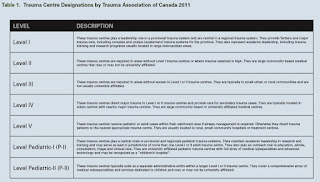This year I have decided to switch to start utilizing a new PFD from Northwater. It is essentially the same as my older rescue PFD but is slightly different. One noteable difference it hasn't been used ever. My older PFD has had a lot of use on a lot of rivers and been in a lot of swims. I almost think it is lucky and am a bit hesitant to change it out.
At times, it is nice to have a lot of floatation, so possibly switching to use a new PFD after 7 seasons of use might be a good idea. I have read a few articles where some serious whitewater junkies changeout there pfd's every year. I think Mark Cramer may of mentioned that in an article. You can always learn from somebody who does that much whitewater. Read more about it at;
http://paddlinglife.net/2008/04/02/user-mark-cramer/ and also this is a good article;
https://www.canoekayak.com/inflatables/legends-of-rafting-mark-cramer/
There is a warning on PFD's that they may lose floatation over time.

The US Coast Guard specifies that a PFD must have a minimum of 15.5 pounds of floatation in an adult pfd. Most adults in a bathing suit need seven to 12 pounds of extra floatation to keep their head out of water. Remember that muscle is heavier than fat and the more muscle you have the more floatation you will need. There is some physics behind this and you can read more about that by researching the Archimedes Principle.
A body partially or completely submerged in a fluid is buoyed up by a force equal to the weight of the fluid displaced by the body. This means someone immersed in water is "buoyed" upward by a force equal to the weight of the volume of water that their body takes up (displaces). Gravity pulls a person's body downward by a force equal to their weight. The difference between these forces is a person's net buoyancy. A PFD is very lightweight, but displaces enough water to make the PFD and the person wearing it very buoyant. It also follows that the people hardest to float are those with compact, dense bodies. These tend to be people with athletic body builds, with a lot of bone and muscle mass, and not much fat. Fat is not as dense as muscle and bone, so people who are overweight can actually be easier to float than someone who is much smaller and leaner. Heavy people do not need a higher buoyancy PFD because of their weight.
So to calculate how much floatation you may need you need to figure out a few variables;
1) Water density is affected by temperature. Its more dense when cold. 62.40lbs at 26F.
2) Calculate your volume. density = mass / volume. volume = mass / density.
Anyway, I weighed the PFD - empty - without any added accessories and then the accessories and came up with the following weights;

So it looks like I am adding about 7.25lbs of gear to my PFD and the drysuit adds about 6.1lbs of weight on top of that.
Northwater has two types of PFD's. One has additional floatation to handle the increased weight of accessories worn on your belt. For a small person that adds about 8lbs of floatation and for a large person it may be an extra 5 lbs of floatation.
I would prefer the extra floatation. Might come in handy if you are caught in a hole.
Of course your best bet when in a hole is to swim out of it by swimming to the side or the bottom.
Floatation in this situation can be both a benefit and a detriment.
The following picture shows two pfd's. According to the specs I believe that one probably has 25lbs of floatation while the other claims 30lbs of floatation.

One is a System 30 as shown on the label.

The only real way to know is to test these pfd's for floatation.





